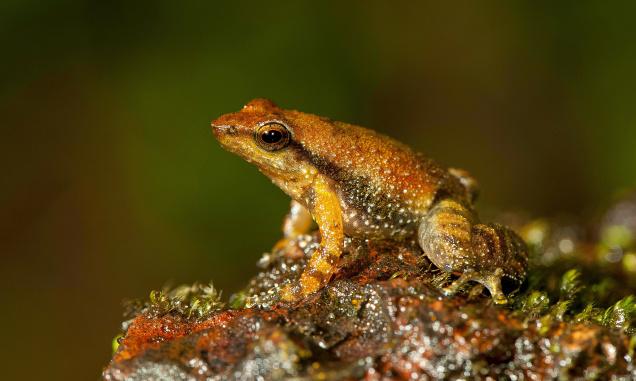
Scientists have discovered 14 new species of so-called dancing frogs in the Western Ghats, just in time, they fear, to watch them fade away.
Indian biologists say they found the tiny acrobatic amphibians, which earned their name with the unusual kicks they use to attract mates, declining dramatically in number during the 12 years in which they chronicled the species through morphological descriptions and molecular DNA markers. They breed after the yearly monsoon in fast-rushing streams, but their habitat appears to be becoming increasingly dry.
The study listing the new species published Thursday in the Ceylon Journal of Science brings the number of known Indian dancing frog species to 24.
Only the males dance: it’s actually a unique breeding behavior called foot-flagging. They stretch, extend and whip their legs out to the side to draw the attention of females who might have trouble hearing mating croaks over the sound of water flowing through perennial hill streams.
They bigger the frog, the more they dance. They also use those leg extensions to smack away other males.The project’s lead scientist, University of Delhi professor Sathyabhama Das Biju, says, “They need to perform and prove, ‘Hey, I’m the best man for you.’”
These are tiny, delicate frogs no bigger than a walnut and can easily be swept away in a gushing mountain stream. So breeding happens only once the level of a stream drops to the point where the water babbles over stones, he explained. If streams dry out too early, the frogs get caught without the right conditions to breed.
“Compared with other frogs, these are so sensitive to this habitat that any change might be devastating for them,” Biju said. “Back in 2006, we saw maybe 400 to 500 hopping around during the egg-laying season. But each year there were less, and in the end even if you worked very hard it was difficult to catch even 100.”
Source:The Hindu 9 May 2014